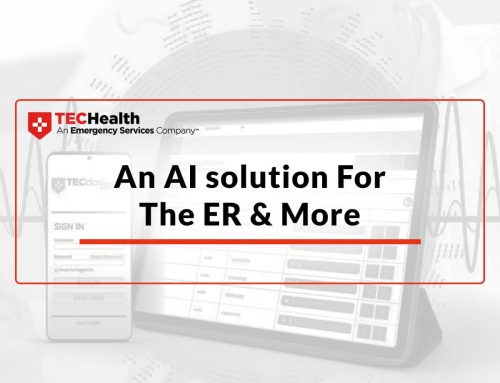January 1, 2023, not only ushered in a new year, it also ushered in significant changes in emergency medicine documentation from the Centers for Medicare and Medicaid Services (CMS). The changes are the most significant updates since 1995. Why is this important and why should all emergency medicine departments be aware of these changes? Because these changes directly impact the reimbursement received for emergency medicine services.
How do the new documentation guidelines differ from the previous guidelines? The American College of Emergency Physicians (ACEP) lists the following most significant revisions:
- The elimination of history and physical exam as elements for code selection.
- E/M code selection is based on Medical Decision Making or Total Time.
- Note that time is NOT used to select ED E/M levels of service. (See FAQ #4)
- Revisions to the rules for using Time to assign an E/M code.
- Modifications to the criteria for determining the level of Medical Decision Making (MDM).
ACEP’s 2023 Emergency Department Evaluation and Management Guidelines provides a comprehensive set of questions and answers.
Medical decision making is now the key to how E/M level charges are assigned. Concerned we would see our coding levels drop in January 2023, TECHealth spent considerable time educating our physicians and advanced practice providers on the new requirements for decision making. We took a comprehensive approach to education, creating videos discussing the new scoring system and creating a documentation template to be used within Dragon Medical One and Cerner. Thanks to almost universal adoption of the template by our providers, we have seen an increase in the average RVUs per encounter. Because of this early success, we think the template is a resource we should share with other emergency medicine departments and programs across the country. If you have noticed a drop in your RVUs or your level assignments, I would recommend implementing this standardized MDM template as well as using the new “magic” words such as stable, unstable, acute, and chronic.
Having the template available is one thing. Having the discipline to use it and fill in the prompts is another, and therein lies the key to success. Educate, educate, educate was our mantra and our efforts appear to be paying off.
As we evaluated the changes implemented by CMS, we noticed they highlight a few high-value targets. You can get significant points by including a differential diagnosis list for the things considered that require work-up and things considered but are unlikely to require work-up. Another insight we’ve gained that we’ve incorporated into our education with providers is to take the time to interpret (and make sure you include the words “interpreted by me”) the EKG and any radiology studies you look at yourself. The radiology interpretation does not have to be at the level of a radiologist. An example would be the presence or absence of a pneumothorax/pneumonia/congestive failure. Anything that you see triggering an action or inaction would suffice. And, if you considered the patient for admission or observation, state as such — even if the patient was discharged home.
Good luck and smooth sailing on your new documentation journey.




